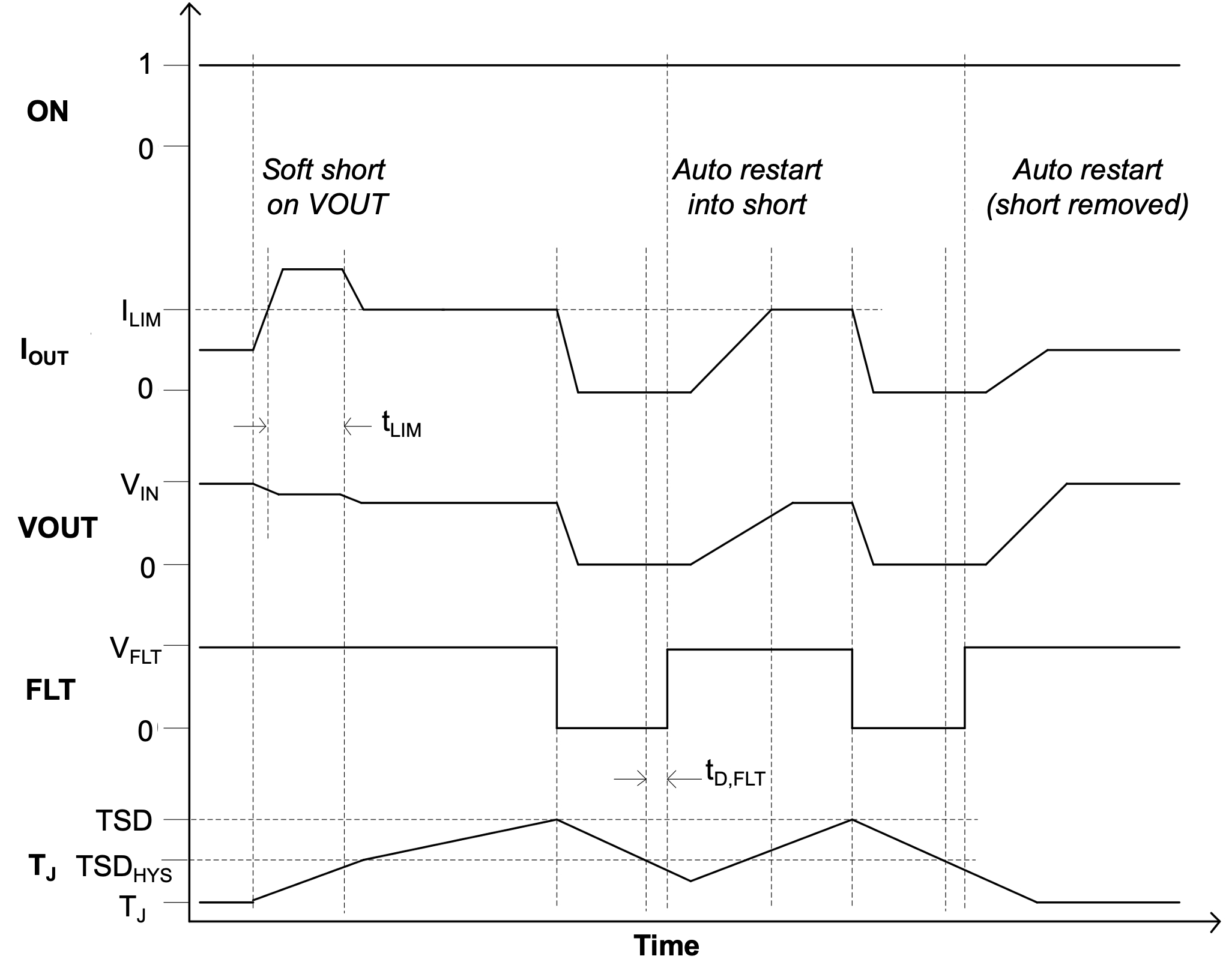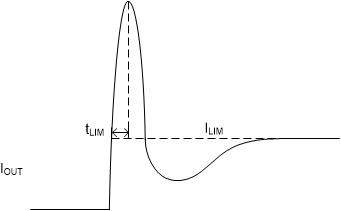SLVSFJ2B December 2020 – February 2023 TPS22950
PRODUCTION DATA
- 1 Features
- 2 Application
- 3 Description
- 4 Revision History
- 5 Device Comparison Table
- 6 Pin Configuration and Functions
- 7 Specifications
- 8 Parameter Measurement Information
- 9 Detailed Description
- 10Application and Implementation
- 11Device and Documentation Support
- 12Mechanical, Packaging, and Orderable Information
Package Options
Refer to the PDF data sheet for device specific package drawings
Mechanical Data (Package|Pins)
- YBH|6
- DDC|6
Thermal pad, mechanical data (Package|Pins)
Orderable Information
9.3.1 Current Limiting (TPS22950, TPS22950C)
The TPS22950 responds to overcurrent conditions by limiting its output current to the ILIM level shown in the figure below.
 Figure 9-1 Output Current Limit for Short-Circuit Protection (tLIM)
Figure 9-1 Output Current Limit for Short-Circuit Protection (tLIM)When an overcurrent condition is detected, the device maintains a constant output current and reduces the output voltage accordingly. Two possible overload conditions can occur.
The first condition is when a short circuit or partial short circuit is present on the output and the ON pin is toggled high, turning the device on. The output voltage is held near zero potential with respect to ground and the TPS22950 ramps the output current to ILIM. The TPS22950 device limits the current to ILIM until the overload condition is removed or the internal junction temperature of the device reaches thermal shutdown and the device turns itself off. The device remains off until the junction temperature has lowered to TSDHYS, and the device turns itself back on. This action cycles until the overload condition is removed.
The second condition is when a short circuit, partial short circuit, or transient overload occurs after the device has been fully powered on. The device responds to the overcurrent condition within time tLIM (see figure below), and before this time the current is able to exceed ILIM. In the case of a fast transient, the current-sense amplifier is over-driven and momentarily disables the internal power FET. The current-sense amplifier recovers and limits the output current to ILIM. Similar to the previous case, the TPS22950 limits the current to ILIM until the overload condition is removed or the internal junction temperature of the device reaches thermal shutdown and begins thermally cycling on and off.
 Figure 9-2 Transient Current Limit Waveform
Figure 9-2 Transient Current Limit Waveform